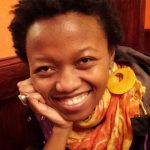Realizing the Power of Intimacy through Dance

****Actual Client Testimonial****
When Johnny brought up the possibility of dance as part of the modalities we would explore during our first session, I was not receptive.
“I don’t like to dance in the presence of other people,” I said.
“I can go in the other room, and we’ll both dance from separate rooms,” Johnny responded, without skipping a beat.
“Sounds good,” I said. “Also, I only dance to Afrobeat.”
“Make me a playlist,” Johnny responded.
Johnny was not deterred by any of my conditions. He did not challenge my resistance but offered ready adaptations. Resistance loses its power to derail when it is met with adaptability that remains faithful to the core objective.
Through words and action, Johnny also let me know that he was hearing me. His willingness to offer adjustments was responsive to my stated needs without interrogation. As a result, I did not need to re-live a story to justify my needs.
Creating the playlist added planning, excitement, and intent as I awaited the first session. I got to choose which music I wanted to dance to, which music I wanted to share with Johnny for his experience of Afrobeat through my ears. I anticipated our first session as I curated the music.
The first session began with an opportunity to shed light on my fear of dogs, which Johnny guided me through by helping me articulate my boundaries, honoring them, and use breath to return to calm and acknowledge my power. Thus restored, Johnny and I negotiated what the dance experience would be. Using a framework of articulating desire, fear, boundaries (“I desire…”, “my fear is that…”, “my boundaries are…”), followed by reflective response from the other, Johnny and I agreed that he would stay in the room with me to guide the dancing exercise.
He put my music on—this was music I didn’t need instruction to dance to. I was happy to just close my eyes, stay rooted in one spot and dance, ignoring anybody else in the room, as I ordinarily would when dancing by myself in public. Johnny however wanted to impart a different possibility. He talked about Gabrielle Roth’s 5Rhythms technique, which I had never encountered before. He adapted this technique to lead me into a different experience of sharing dance.
He guided me to first connect with the music:
Entering a shared dance space, before connecting with others, before noticing and absorbing others’ movements, first, connect with the music. Let the music be the foundation informing your body how it wants to move.
We took time with this first stage of connection, which is similar to the rhythm of flowing in Gabrielle Roth’s model. Connecting the body first to music allowed me to be receptive to my internal sensory world and how I desired to respond to the stimuli music was offering.
Next, Johnny guided me to allow awareness of space into my connection with the music. To claim space for myself, and for my body while maintaining my foundational connection with the music. This entailed Johnny and I both traversing the room, and not yielding my space even when Johnny was near me. To become bigger rather than smaller when my space is being encroached upon, and in that way, to communicate—body-to-body, object-to-object—that the space I am taking up is mine, and right now, I am inviting no one else to partake of this space.
This has connections with Gabrielle Roth’s staccato rhythm. Staccato, according to 5Rhythms:
shows us how to step out into the world connected to our feet and our feelings. This rhythm is the ruler of our linear world, the ruler of the warrior part of us, the part of us that shows up as truth and clarity. It is the part of us that stands up for what we care about, who we love, and what we love. Staccato is the fierce teacher of boundaries. And it is the protector and ambassador of our fluid being.
By layering the awareness of and claiming of space into the dance, I could move about the room without losing a sense of myself. I could define and uphold the container I wanted for my body without yield. I did not have to cower to another person’s claim to space should it encroach on mine, rather I use my body to uphold my boundaries and even enlarge my territory. This avenue of expression feels true not only for the dance floor, but also for navigating the broader world: what if womxn, non-binary folks took up all their space?
Next, Johnny invited me to integrate momentary connection with another into my dance experience. So while remaining connected to the music, and claiming my space, could I share a moment, perhaps an eye glance, with another and subsequently carry on? This meant I had the option to connect with another person, acknowledge the connection, and move on. Since Johnny was the only other person in the room, it meant he could catch my gaze or I could catch his, share the moment of dance, and either of us could move on ahead of the other. This was huge for me. That connection could be momentary, that I could be receptive to another’s gaze, that dance as the foundation of shared connection meant I did not have to overthink the moment, all of this made it easeful for me, an introvert and recluse, to be with someone else in shared space.
In negotiating the parameters of the dancing exercise, I had told Johnny that I was afraid to feel self-conscious, I was afraid that dancing in shared space would be thoroughly awkward and I did not want to experience such awkwardness.
Following our work exploring the third layer—music + space + other people—I realized profoundly that what I had been afraid of was the intimacy of connection. That was at the root of my initial resistance. I was trying to ward off any possibility of letting another person in, I was trying to ward off any moment of vulnerability, or any confrontation with the unfamiliar.
Through our work exploring these three layers and stages of sharing dance, Johnny offered me an easeful way to integrate connection first with myself through music, then with my body and environment by claiming space, and finally with another person by drawing on the momentary rhythms of engagement and letting go that time affords.
At Ease,
Tayo Jolaosho
#Testimonial #MetageneHealth #Johnnyvajra

About the Author
Tayo Jolaosho is a yoga and breathwork teacher, who holds a PhD in Cultural Anthropology. They have studied the role of embodied performance within activist collectives for over a decade. With knowledge garnered in this field coupled with a passion for social justice, they continue to identify novel ways by which to engage seekers towards personal and collective liberation. As a yoga teacher, collective breath leader, researcher, and university professor, this Human is committed to heeding the body's wisdom and inspiring others to do the same. Follow Tayo at http://breathbodyalive.org
This site uses Akismet to reduce spam. Learn how your comment data is processed.

Leave a Reply
You must be logged in to post a comment.